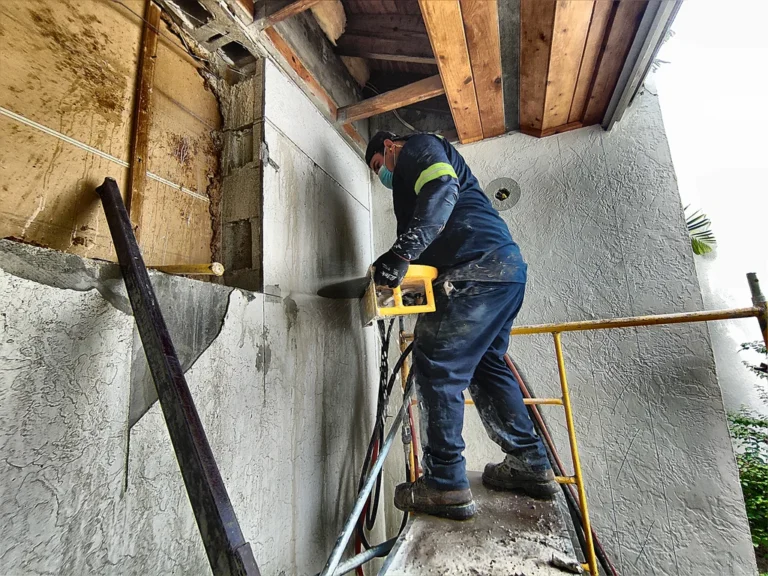Concrete cutting is a crucial process in construction and demolition work. Understanding whether to cut concrete wet or dry can significantly affect the quality, safety, and efficiency of your project. This article explores the differences, advantages, and limitations of both methods.
Understanding Concrete Cutting
Before delving into wet and dry cutting methods, it’s essential to understand the basics of concrete cutting. Concrete cutting involves the use of specialized tools and techniques to cut through concrete, a robust and durable material widely used in construction.
Wet Cutting Method
Wet cutting involves using water during the cutting process. This method is known for reducing dust, cooling the cutting blade, and enhancing safety.
Advantages of Wet Cutting:
- Dust Suppression: The primary advantage of wet cutting is its ability to suppress dust. This leads to a cleaner work environment and reduces health risks associated with silica dust.
- Blade Longevity: Water cools the cutting blade, reducing wear and tear and extending the blade’s life.
- Enhanced Safety: Wet cutting minimizes the risk of overheating and potential blade warping or breaking.
Limitations:
- Water Source Requirement: You need a continuous water supply, which might not be available at all sites.
- Messier Process: Water can create slurry, which might require additional cleanup.
- Not Suitable for All Environments: In colder climates, water can freeze, causing hazards.
Dry Cutting Method
Dry cutting, in contrast, does not use water. It’s often preferred for its convenience and speed.
Advantages of Dry Cutting:
- Convenience: It can be performed without the need for a water source, making it more flexible.
- Speed: Dry cutting is generally faster as it doesn’t involve setting up water supplies or dealing with slurry.
- Versatility: It’s suitable for environments where water use is not feasible.
Limitations:
- Dust Production: Produces a significant amount of dust, which can be hazardous.
- Blade Overheating: Without water, blades can overheat, reducing their lifespan and efficiency.
- Health Risks: The dust generated can pose respiratory risks if not properly managed.
Comparing Wet and Dry Cutting
When deciding between wet and dry cutting, consider factors like the project environment, the availability of water, and health and safety concerns.
Project Specifics
Each project has unique requirements. For instance, in a luxury construction, where precision and cleanliness are paramount, wet cutting might be preferable. In contrast, for quick, small-scale jobs, dry cutting could be more efficient.
Environmental Considerations
Environmental factors play a crucial role. In areas with water scarcity or freezing temperatures, dry cutting is more practical. Conversely, in urban settings or confined spaces where dust control is crucial, wet cutting is advantageous.
Best Practices in Concrete Cutting
Regardless of the chosen method, following best practices is essential for safety and efficiency. This includes using the right tools and techniques, wearing appropriate personal protective equipment (PPE), and adhering to local regulations.
Wet Cutting Best Practices:
- Ensure a steady water supply.
- Manage slurry to prevent environmental contamination.
- Use appropriate PPE to handle wet conditions.
Dry Cutting Best Practices:
- Use dust suppression systems like vacuums or local exhaust ventilation.
- Regularly check and maintain cutting blades.
- Limit exposure time to reduce dust inhalation.
Choosing between wet and dry concrete cutting depends on various factors including the project’s nature, environmental conditions, and safety considerations. Both methods have their advantages and limitations. By understanding these and implementing best practices, you can ensure the success and safety of your concrete cutting project.
We invite you to share your experiences or ask questions about concrete cutting in the comments below. Whether you’re dealing with thick concrete slabs or intricate cutting tasks, your insights can help others in the industry. Remember, the choice between wet and dry concrete cutting can significantly impact the outcome of your project. Consider factors like dust control, equipment longevity, and the specific needs of your project environment. For more insights and tips on effective concrete cutting, explore various topics like effective concrete cutting techniques or essential tools for the job. Your feedback and questions are valuable to us, so don’t hesitate to join the conversation below!






